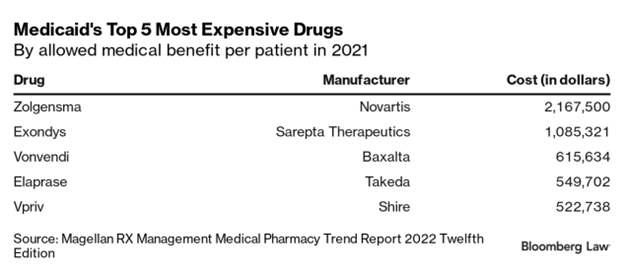MM Curator summary
The article below has been highlighted and summarized by our research team. It is provided here for member convenience as part of our Curator service.
[MM Curator Summary]: There are very few limits on the wealth you can have and still get on Medicaid in CA if you are over 65.
Clipped from: https://thehill.com/opinion/healthcare/4138033-this-is-reform-california-wants-to-let-its-billionaires-go-on-medicaid/
Politicians and investigative journalists have long complained about the billionaires that have no taxable income and pay no taxes despite their wealth. In response, politicians have advanced many constitutionally dubious proposals to tax wealth on grounds of equity and fairness.
It is odd, then, that there has been so little attention paid or protest given to the pending proposal in California — phase II of its 2021 reform — to strike all asset testing for those above age 65 in determining eligibility for long-term care benefits from Medicaid.
Lest anyone dismiss this as another crazy California idea that will never be enacted, like universal state government health insurance and racial reparations, this Medicaid expansion proposal is well on its way to approval, part of a series of incremental steps over the last several years that have already loosened Medicaid eligibility standards.
And this one offers a dangerous precedent for other states. Because Medicaid is jointly financed by the federal government, at fifty cents on the dollar or more, non-California taxpayers, including many middle-income workers living in states with stricter Medicaid rules, will actually end up paying a huge chunk of this costly California policy’s billion-dollar annual price tag.
Medicaid was designed as a jointly financed federal-state program to provide health care for the poor. It also pays for nursing-home care and increasingly for home healthcare for individuals, especially the disabled and elderly who spend down their assets before becoming eligible. Eligibility for various types of long-term care benefits is determined by medical need and a set of income and asset tests, which differ by state and have changed over time, but are within a federal framework.
California has long played loose with eligibility, benefits and other rules, even beyond the allowable leniencies in federal law. For example, under “Phase I” of the state’s 2021 reform legislation, its asset-test maximum for Medicaid eligibility is $130,000 (compared to just $2,000 in most states) for individuals and $195,000 (compared to $3,000) for couples.
Also, the “look-back” period to identify and disallow strategic transfers of assets to gain Medicaid eligibility is only 30 months, whereas federal law calls for 60 months. California’s look-back also does not apply if the applicant is not in a nursing home at the time of application. Federal law penalizes such strategic transfers, regardless of whether the person is institutionalized. California also turns a blind eye to as much as $12,000 in daily transfers of wealth to relatives per day, meaning that the wealthy can strategically shift as much as $4.4 million per year in order to pass the asset test.
California also completely disregards applicants’ net housing equity, which most states start to count as an asset after exempting the first $688,000 to $1,033,000. Retirement assets, including spousal retirement assets, are also disregarded, unlike in most other states.
Estate recovery from deceased recipients only applies to assets going through probate, thus bypassing retirement and insurance assets entirely. Unlike in some states, no liens are placed on housing. Despite the great wealth held in California, with home values averaging $750,000, the Medicaid program’s estate recovery efforts have lagged over the years, falling from $72 million collected in 2015 to $17 million in 2020.
Many of these leniencies directly contradict federal law, yet they were somehow approved by federal regulators at the Center for Medicare and Medicaid Services (CMS), without request for public comments, through a series of state plan amendments. Today, Phase II of California’s pending proposal — the total elimination of asset testing — is before CMS.
California officials told CMS that the total disregard of assets would annually cost the federal government only $115 million. Their own budget showed an increase of 37,000 newly eligible individuals and a $400 million total cost.
This is low compared to the approximately $35 billion that California spends on long-term care benefits through Medicaid. My own rough calculation, based on data from the Health and Retirement Study on asset holdings and another survey on long-term care needs, is that the annual additional cost to Medicaid from California’s disregard of assets will actually be at least $1.2 billion, with over 100,000 newly-eligible individuals.
Roughly half of this bill will be picked up by the federal government, not just by California taxpayers.
Even more concerning than the bad policy — which is contrary to the financial self-reliance of those who can afford it — is the poor precedent this circumvention of federal law would set for other states in designing their own Medicaid programs. Also, the complete lack of democratic process and bureaucratic transparency at a time of massive federal budget deficits is profoundly disturbing.
It is not too late for CMS and Congress to call these harmful actions into question and stop them.
Mark J. Warshawsky is a senior fellow at the American Enterprise Institute. He served as Vice-Chair on the federal Commission on Long-Term Care in 2013.
Tags California Medicaid


